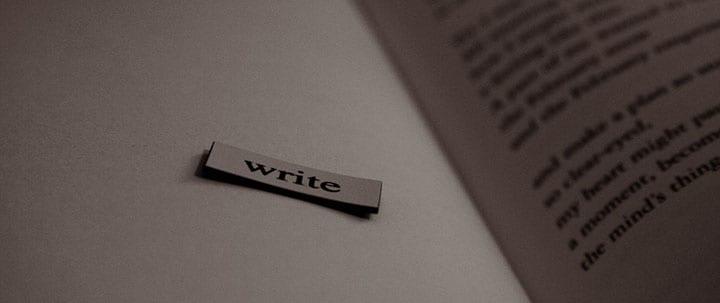Interested in learning how to write a haiku? In this article, you’ll learn about the rich history of haiku poems, and get to take a stab at writing your own.
The haiku form style actually originated from tanka, a short poem with a 5-7-5-7-7 syllable rhythm. Tanka was originally practiced by Japanese noblemen and Buddhist priests.
During the 9th-12th centuries, writing tanka became a game called “renga,” where one person wrote the first three lines of the poem and another person wrote the next two lines.
In order to impress other gamers, poets began to write the first three verses before the “renga” game even started.
These unrhyming, three-line verses began to be recognized as a form of poetry known as hokku. Eventually Masaoka Shiki, a 19th century Japanese poet, coined the term haiku.
Now that you know a bit of the background behind how haiku poems began, let’s take a look at how to write a haiku.
How to Write a Haiku Poem in 7 Steps
A haiku is a micro-poem, which is a poem that has 20 or fewer words. It is a three-line poem about nature or the human condition.
The writer captures an ordinary moment by using simple and direct words. In other words, the poet shows rather than tells.
To begin learning how to make a haiku, follow these simple steps:
- Select the type of haiku (traditional or free-form) that you want to write.
- Pick a topic. You can write about nature, if you’d like.
- Decide if you are going to include a kigo (seasonal reference) or a kiru (comparing two different ideas). Remember that traditional haiku poems usually have a kigo and a kiru, but free-form haiku do not.
- Start writing. Don’t forget to count the syllables and make sure that your haiku has 20 or fewer syllables.
- Center your haiku on the page like the poems below.
- Haiku poems usually don’t rhyme or use things like similes, alliterations, or metaphors. But don’t be afraid to break these rules! Most haiku masters have broken these rules, too.
- Have fun and share your poems with others!
What is Haiku?
Although there are many types of haiku, the traditional pattern in English has 17 syllables. The first and last lines have five syllables each, and the middle line has seven syllables. The pattern of syllables looks like this:
1-2-3-4-5
1-2-3-4-5-6-7
1-2-3-4-5
Here are two more examples of traditional haiku poems:
Surely that spring moon,
So yellow and so fragile,
Will crack on a cloud!
-Richard WrightAn aging willow–
its image unsteady
in the flowing stream
-Robert Spies
Kigo and Kiru
When learning how to write a haiku, it’s important that you pay attention to the kigo and kiru.
Haiku usually has a kigo, a seasonal reference. For example, you can include a word like “April” or “winter,” or mention cherry blossoms, which bloom during the spring – thus suggesting the season.
A haiku often contains a kiru, or two contrasting ideas. The writer creates a leap between the two ideas, giving the poem a deeper meaning.
Creating this comparison can be the hardest part of writing a haiku because it can either be too obvious, or unclear. Note the kiru in this poem by American poet Micheal Welch:
Meteor shower…
a gentle wave
wets our sandals
SEE ALSO: How to Write a Song
Types of Haiku Poems
Keep in mind that there’s more than one type of haiku. Most American poets do not use the 5-7-5 syllable rhythm when writing haiku.
When poets started writing English haiku in the 1950s, they realized that 17 syllables in English conveyed more information than 17 syllables in Japanese, and have come to write haiku in fewer syllables, usually 14 syllables or fewer.
Most American haiku still have three segments that follow a short-long-short pattern. This style is called “free-form” haiku.
Here are three examples of free-form haiku:
Spring morning
a goose feather floats
in the quiet room
-Bruce RossSnow in my shoe
Abandoned
Sparrow’s nest
-Jack KerouacLittle spider,
will you outlive
me?
-Cor van den Heuvel
A few American haiku poets have broken completely away from the three-line form of Haiku. The most common type of haiku is one line.
pig and i spring rain
-Marlene Mountainan icicle the moon drifting through it
-Matsuo Allard
At its most minimal, haiku may consist of a single word, like the example below.
Tundra
-Cor van den Heuvel
Haiku can also sometimes have four lines with one or two words per line. This form of haiku is called “vertical haiku.” See the examples below:
She watches
satisfied after love
he lies
looking up at nothing
-PWBeneath
leaf mold
stone
cool
stone
-Marlene Wills
American poet John Carley invented the fixed-form or zipped haiku. This form of haiku has 15 syllables divided between two lines. Each line has a pause that is double spaced.
buoyed up on the rising tide
a fleet of head boards bang the wall
-John Carley
Do you have any other tips for how to make a haiku? Let us know in the comments section below, or share your favorite haiku! Have fun getting creative with these fun poems and don’t be afraid to break the rules if needed.
About the Author: Cherese Cobb is a journalist, creative writer, and self-proclaimed haiku nut. She can answer your questions about Haiku contests and writing via Twitter @Poemgirl88. Learn more about Cherese here.
Photo by .reid.
Suzy S.
